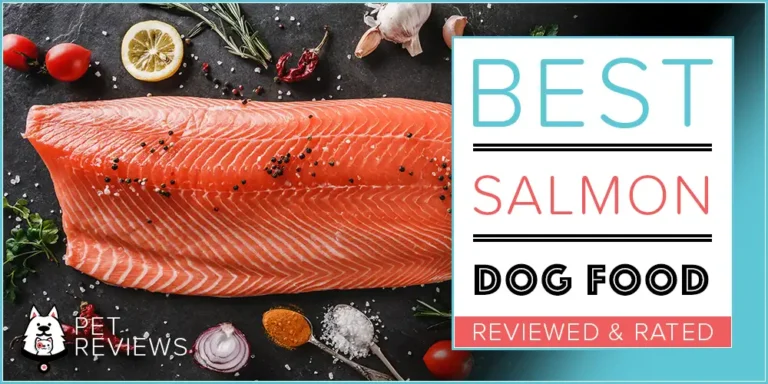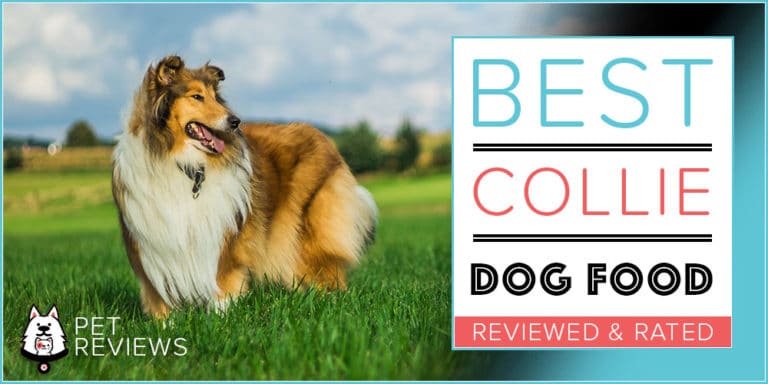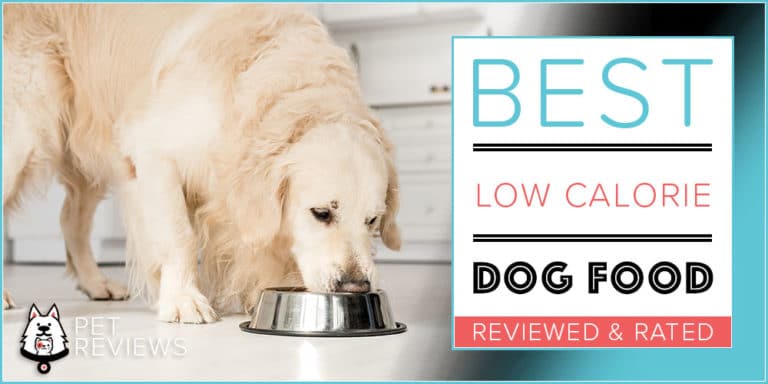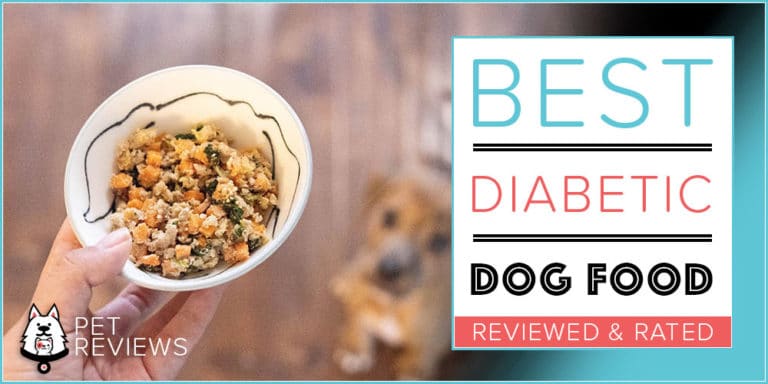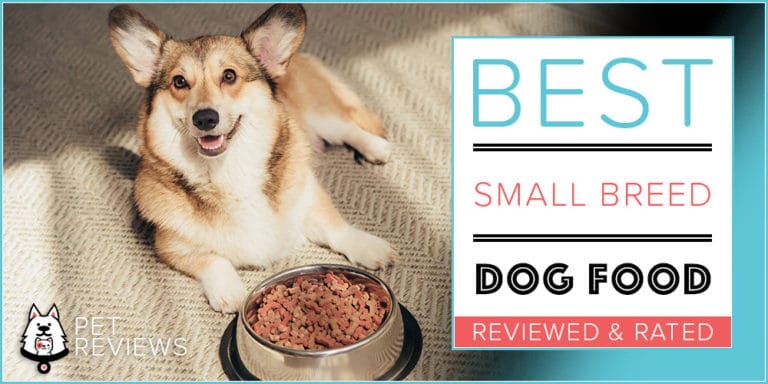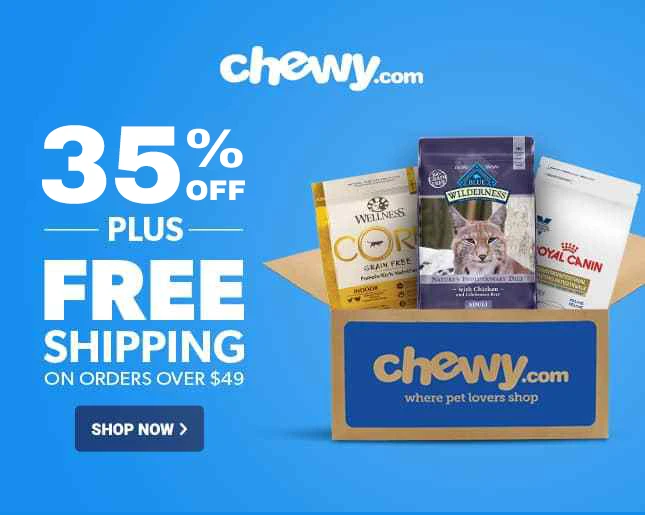Dog Feeding 101 – Dog Food Advisor 2024
Quick Guide
Diet is the most important factor when it comes to your dog’s life, and you should invest some time to find the right one. Through food, a dog ingests nutrients that fuel his energy needs and keep his cells and organs functioning properly.
That means that the food is a determining factor when it comes to health and the lifespan of your dog. Complete and balanced diet from the young age will supply your dog with all micro and macro-nutrients hence preventing any health problems.
You should be aware that there isn’t a single food that is the best for all dogs, and the nutritional needs of your pup depend on several factors. So to help you understand your dog and meet his needs, we made a dog feeding fundamental.
Since every dog is different you will have to cater to the individual needs of your pup in order to help him thrive. So keeping that in mind consider the following things in order to find the perfect food for your dog.
5 Steps To Choose A Right Dog Food
#1 Determine Dog Age
Puppy, Adult or Senior?
#2 Determine Dog Breed
Small Breed Or Large Breed?
#3 Decide Your Budget
How Much You Should Pay?
#4 Decide On Food Type
Dry, Wet, Raw… Dog Food?
#5 Considering Health Problems
Is Your Dog Under Any Health Problems?
Determine Your Dog’s Age
It is important to realize that dogs have three life stages- puppy, adult, and senior. With that being said, dogs have different nutritional needs in different life stages.
So feeding your dog with the food that is appropriate for his life stage is crucial to keep him healthy and happy in the long run. Also, the number of meals necessary to keep your dog’s belly full during the day will change as he grows.
Puppy
In early stage of dog life, Nutritions is the most important factors to help your dog growing healthily
Growing up is a hard work, and puppies need special nutrition. Young dogs are at higher risk of developing nutrient deficiency if fed with low-quality food.
Puppies don’t have the same requirements as adult dogs, and their diet should include foods that have around 445 kcal/cup. According to AAFCO, minimum nutrient requirements for a puppy is 22% of protein and 8% of fats.
When To Wean A Puppy?
Once a puppy is 4 weeks old it is safe to transition him from a mother’s milk to a solid food, this process is called weaning. And while there are special weaning foods a puppy can and will do well on any type of puppy food. You can start weaning a puppy when he is 4 weeks old and transition him to solid food in the next 4 weeks. During this period a puppy starts to eat solid food and continues taking smaller amounts of milk from the mother. If you opt for feeding dry puppy food during the weaning, mix it with water to soften the kibble and make it easier to chew. You can introduce completely dry food once a puppy is 5-6 weeks old. During weaning period a puppy should have 4 small meals, equally spaced during the day. Use puppy wet or dry food, since it is high in calories and has all the nutrients for proper development.
How To Feed A Puppy?
Once a puppy has completely transitioned on a dry food, buy the best puppy food your budget allows. Commercial puppy foods are complete and balanced and made to fulfill the needs of a growing puppy. Puppy food has more calories to support the needs of always playful and active puppies. Furthermore, higher protein and fat content contributes to a steady and normal growth. Once a puppy is weaned he should continue to have 4 small meal until he reaches adulthood. Every food has feeding guidelines so stick with the recommended amount of food based on your puppy’s individual needs.
Adult
In order to maintain health and to improve your dog’s immune system, you need to follow these below recommendations
Generally, once a puppy is 1 year old he is considered an adult. Still, factors like breed and size of a dog can affect the growth rate.
Once your dog reaches adulthood his nutritional needs change as well. Thus you will have to transition him to adult maintenance food that is made according to AAFCO rules and regulations.
A normally active adult dog will need a minimum of 18% of proteins and 10% of fats combined with all vitamins and minerals. Very active and working dogs can eat food that has higher levels of proteins and fats since they spend more energy during the day.
What Are The Needs Of Adult Dog?
Once a dog becomes an adult he will have a reduced appetite and will naturally require less food. Since puppy food is high in calories you will have to transition your dog to the best dog food. Adults also require different amounts of proteins, fats, and carbohydrates in order to stay healthy. An optimal blend of minerals and vitamins will keep their organs and body functioning properly. Adult dogs need the right blend of nutrients that are designed for adult maintenance. That means that your dog needs to transition from puppy to dog food.
How Many Meals To Feed?
When you start transitioning your dog to adult dog food you should also start giving him two smaller meals a day and continue doing so for the rest of his life. This schedule works best for the most of owners and you don’t need to worry about your dog being hungry at any point in the day. In order to find the right amount of food for your dog, access his activity level. Sedentary and neutered dogs will need 10% less food than indicated on the label. On the other hand, an active dog that spends most of his time running and playing may require 20% to 40% more food. And if you have a working dog you need to consider a high fat and calorie diet designed for performance dogs.
Senior
When your dog become old, they need special care, specially nutritions
As a dog gets old his metabolism slows down and he goes through significant physical changes. This means that their energy requirement gets lower putting them at higher risk of obesity if not fed with the right food.
Hence, an older dog requires his diet to be changed to a low fat and less calorie dense food. There are also special veterinary diets for older dogs that suffer from diabetes, kidney, liver disease or other conditions.
When Dogs Become Old?
The metabolism of an older dog starts to slow down, just like with people, and naturally older dogs require fewer calories. Getting old is a normal way of things, and generally, once a dog is 7 years old he is considered a senior. Still, some dogs can show no signs of slowing down even if they are 10, and some can start losing their strength when they are 5. This mainly refers to giant and large breed, that have shorter lifespans, but it may not be the case with your pup.
What To Feed To A Senior Dog?
Generally speaking, an older dog can continue eating the same food, you will just have to adjust the quantity you are feeding. Because older dogs are less active and not energetic as before they will need fewer calories in order to maintain the ideal weight. On the other hand, specially made senior formulas contain certain supplements for ailments that affect older dogs. Mobility and joint issues are common in older dogs, so senior formulas include glucosamine, chondroitin, and other beneficial supplements. If you have any doubts about the type of food your senior dog needs, you can always talk with your vet. He will be able to make recommendations based on your dog’s health and individual needs.
How Often To Feed An Older Dog?
Older dogs need to have two meals per day and to keep your dog’s belly full through the day give him breakfast and dinner. You should be extra careful to not exceed the daily calorie count since older dogs are prone to obesity.
Determine Your Dog’s Breed
Brushing your dog plays a big part in his overall appearance and health. Just like bathing, grooming is important for keeping your dog clean and his coat healthy. It can also be a great activity to strengthen your bond.
The metabolism of an older dog starts to slow down, just like with people, and naturally older dogs require fewer calories. Getting old is a normal way of things, and generally, once a dog is 7 years old he is considered a senior. Still, some dogs can show no signs of slowing down even if they are 10, and some can start losing their strength when they are 5. This mainly refers to giant and large breed, that have shorter lifespans, but it may not be the case with your pup.
Small Breed Dogs
Small Breed dog have a high metabolic rate. So they need special type of food
Why Small Dogs Need Different Food?
Smaller and toy breeds have a higher metabolic rate and are generally very active and full of energy all the time. So it comes as no surprise that they need more calories to sustain them. Smaller breeds also grow up faster and are considered adults around 9 months, but are fine with eating puppy food for a few more months since it is calorie rich. Foods that are designed for small dogs have specially designed smaller kibble that is easy to chow.
How To Feed A Yorkie?
Besides Chihuahuas, and Boston Terrier’s, yorkies are one of the most popular small breed dogs. This breed can easily develop dental problems With that being said, stick with high-quality dry food that will promote teeth cleaning and serve it in 3 small meals for optimal nutrient absorption. You can also opt for targeted food for small breed and rest assured that all the nutritional needs of your dog are met.
How To Feed A Boston Terrier?
Even though they are considered a small breed Boston Terrier’s come in different sizes. Depending on your dog’s size you can opt to feed him food for small or medium-sized breeds. This breed can have digestive problems, allergies, and problems with chewing. Thus it is best to stick with grain-free, high-quality protein food that has smaller kibble. An adult Boston Terrier should have 2 smaller meals during the day.
How To Feed A Chihuahua?
Chihuahua is a small dog that can develop dental problems, upset stomach and requires equally spaced meals. Furthermore, since they are very small their body can’t deal with high amounts of salt, so you should check the salt content. Once an adult, this breed needs two meals per day and thrives on high-quality food.
Large Breed Dogs
Food designed for large breed dog will help them growing healthy
Why Large Breeds Develop Slower?
Large and giant breeds tend to develop slower and need more time to grow up compared to small breed dogs. Big dogs will gain around 40 pounds in the first year, and it takes time for their bones to grow and that weight to accumulate. A large dog will become an adult between 15-18 months of age and will reach old age much sooner than any small breed.
What Are Special Needs Of Large Dogs?
When it comes to large dogs a special consideration must be made for their bone development, growth rate, and maintaining them on their ideal weight. Typically, food for the large breed has fewer calories and contains bone and joint support. When shopping for a food for a large dog you should check calcium-phosphorus ratio in order to avoid bone malformations and problems. Look for foods that contain 1.2 parts of calcium per 1 part of phosphorus making the ratio 1.2:1 ideal.
What Is The Perfect Feeding Schedule
Bloat is a common condition in deep chested large breeds, so you should feed your dog with two smaller meals. Smaller meals will also keep your dog’s belly full for a longer time and stimulate good digestion.
Do All Dogs Have The Same Needs?
Although all dogs have the same basic nutritional needs, every dog is different and has its individual dietary needs. When it comes to large breeds always choose complete and balanced food that supports bones and joints. To help you understand your dog’s needs better we listed most popular large breeds and their needs.
What To Feed To Labrador?
Labrador is a high-energy breed that can benefit from diets that have higher protein levels and complex carbohydrates. They are also prone to bloat and obesity so you should feed your dog with 2 meals that won’t exceed his daily calorie requirement. This breed is also prone to allergies so try buying a grain-free or hypoallergenic food for Labrador.
How To Feed A Pitbull?
Pitbulls are a high energy breed that has problems with allergies and requires a high-quality food. Ideally, a food for Pitbull should be high in protein, low on grains, and made without fillers. To prevent weight gain and bloat feed your dog with 2 equally spaced meals once he reaches adulthood.
German Shepherd Food?
This is a high-energy working dog breed that can benefit from targeted nutrition. Food for German Shepherd food needs to have high protein and moderate fat levels. Since they are prone to allergies a food needs to be grain-free or contain wholesome grains. Bone and joint supplements are a must, so look for foods that have glucosamine and chondroitin.
How To Feed A Husky?
Husky is a very active breed that has the ability to self-regulate the amount of food it needs. They can also be picky when it comes to the food they like, and since they are very stubborn they can refuse to eat completely. Food for Husky needs to be calorie rich, high in proteins, have higher levels of fats and easily digestible carbohydrates. You can feed a Husky 2-3 times a day to help him meet his calorie requirements.
Decide On Your Budget
According to price range, we divide dog food to 3 type: cheap, mid-range and premium dog food. But it doesn’t mean that the most expensive is the best
Taking care of a dog isn’t by any means cheap, but you should always try to buy the best possible food for your budget. Nowadays, there is a wide range of different dog foods to suit the dog’s needs at an affordable price. Feeding your pup with the best possible ingredients should be your priority no matter how much money you are able to spend. And in the long run, slightly better ingredients will save you a lot of money on vet bills.
Cheap Dog Food
Taking care of a dog isn’t by any means cheap, but you should always try to buy the best possible food for your budget. Nowadays, there is a wide range of different dog foods to suit the dog’s needs at an affordable price.
Feeding your pup with the best possible ingredients should be your priority no matter how much money you are able to spend. And in the long run, slightly better ingredients will save you a lot of money on vet bills.
Limited Budget Dog Food – What To Look For?
Even if you are on a tight budget you shouldn’t make compromises when it comes to your dog’s health. Look for foods that have named meat-based protein as the first ingredient, meat meal is also a good source as long as it is named. You should be aware that cheaper foods contain a lot of filler grains like wheat, soy, or corn. This isn’t necessarily a problem as long as the food is complete and balanced.
What Are The Cons Of Cheap Dog Food?
In most cases, you won’t find real fruit and vegetables listed on the label, but all the essential vitamins and minerals need to be present. You will probably have to feed more of cheap food to your dog since they aren’t so calorie dense as the more expensive ones. Also, cheaper foods contain artificial colors, flavors, additives and preservatives which don’t provide any nutritional value. But that are the things that make the food taste so good to your dog.
Mid-Priced Food
When it comes to the mid-price range there is a lot of quality and healthy dog foods you can choose from. However, the price isn’t always the proof of quality and you should still check the label.
What Are The Advantages?
For a medium budget look for foods that have chicken, turkey, or beef as the main ingredient. In the most cases, you can also find a named protein source as the second ingredient. Depending on your dog’s needs you can find grain-free or foods with healthy wholesome grains at this price. These foods will have vegetables like sweet potatoes, carrots, peas, and others to help keep the stomach full for longer time. Furthermore, some brands have fresh fruits and added probiotics and prebiotics to support better digestion and nutrition absorption. Also, these foods contain fish or salmon oil or chicken fat that is an animal source that is easier to digest and also better source of energy compared to vegetable oils. Because of the better quality of ingredients, these foods contain more nutrients and have higher calorie content. That means that you will feed smaller quantities to your dog, and won’t have to buy two bags of dog food a month.
Why Check The Label?
In some cases, you can see a mid-priced dog food that contains unnamed meat sources or grains as the main ingredient. Hence, you shouldn’t just pick a more expensive bag of food and take it home without looking at the label. Doing your due diligence is the key to finding the best food for your dog, no matter how much you are willing to pay.
Super-Premium Food
If you have a lot of money to spare and want to feed only the best to your dog, you may consider premium quality dog foods. Still, we advise that you check the label no matter how much the food costs.
What Are The Benefits
These foods always have a named meat as the first ingredient, and you can find novel protein sources very easy. Furthermore, meats are usually listed as second and third ingredient thus these foods have higher protein content. In most cases, these foods are advertised as made from human grade ingredients. Meaning that it is made from meats that are safe for people to eat, and doesn’t contain legs, guts, and heads which is a common practice in cheap foods. You can easily choose between grain-free or foods that contain grains, but these will be wholesome and healthy grains like oatmeal and brown rice. Also, these foods will have a large number of fruits and vegetables. They are natural and fresh sources of vitamins and minerals that are also supplemented. For a premium price, your dog will get the right amounts of nutrients from high-quality ingredients. Since expensive foods are full of nutrients and calorie dense a bag can easily last you the whole month even if you have a large dog. And in the long run, this may even cost less than taking your dog to the vet every once in a while because he has a compromised immune system.
Is It Worth It?
In some cases, premium quality foods only have traces of all that fancy ingredients, and that doesn’t mean much to your dog. And there is always a possibility that your dog refuses to eat this food if he is accustomed to the flavors of cheaper options.
Decide On A Type Of Food
There are many type of food in the market: dry, grain-free, raw, canned dog food… You should seriously consider what you should feed your dog for good
There are several types of dog foods, and all of them are created to be beneficial to your dog. In the end, the individual needs of your dog and your personal opinion will decide what is the best for your dog. But with so many options it can be hard to decide what to feed your dog with. So in order to help you, we will list positive and negative aspects of most popular types of dog food.
#1 Dry Dog Food
Kibble or Dry Food is also the most easily found type of food and the most economical one, which is one of the reasons for its popularity. Furthermore, you can find a wide range of different dry formulas with all kinds of flavors and ingredients. One more good side of dry food is that is easily stored and lasts longer compared to other dog food options. It is also good at keeping your dog’s teeth clean and healthy because of its crunchy texture. Dry food is also easy to serve and doesn’t require any sort of preparation and your pup is less likely to leave the mess behind him after eating. And you can leave it in the bowl for a whole day without worry of spoiling.
#2 Wet Canned Dog Food
Canned food is a good choice for dogs that don’t drink enough water. Furthermore, soft texture allows older dogs and ones with dental problems to chew normally and without pain. Wet food is cooked at high temperatures hence it has a very long shelf life and is free of any additives and preservatives. It comes as meatloaf, chunks in jelly or chunks in gravy with delicious tastes and smells that dogs love.
“However, they have a very short expiration date once opened. It can be used only for 2-3 days if previously refrigerated, and you shouldn’t leave it in your dog’s bowl more than two hours.”
#3 Grain Free Dog Food
Grain-free food gain popularity in recent years with the use of Paleo diet. The advocates of this food say that dogs are carnivores and can’t digest grains and don’t need them. Besides being easier to digest, grain-free food is generally made from higher quality natural ingredients. That means that a dog will get more valuable nutrients that will improve his overall health.
“Most dog owners have misconceptions that all dogs can’t digest grains, but this isn’t true and it is simply a marketing trick. While some dogs do have grain allergies, most dogs don’t and have no trouble digesting grains.”
#4 Raw Dog Food
For many people, a raw diet is the only and natural way a dog should eat and it has many health benefits. So it’s no wonder that many dog parents transition their pups onto this type of food and that this diet is gaining popularity. Dogs that eat only raw have small, compact and odorless stools, their skin and coat are healthy and shiny. Moreover, underweight dogs were able to gain eight naturally, and obese dogs to lose it and maintain their ideal weight. And the best thing about raw food is that you know exactly what your dog is eating and you are sure of the quality of the meat. You can easily find raw meat for your dog at your local butcher or in pet stores.
#5 Dog Treats
Treats are also part of your dog’s diet and are one of the best ways to train and reward your dog. When it comes to commercially made dog treats they come in every shape, size, and flavor.
Why Give Treats?
There is no better way to reward your dog than giving him one of his favorite treats. Moreover, treats are the easiest and most efficient way to train your dog. As we said, treats come in every shape and size, and now you can find a wide range of dental treats. These are specially formulated to clean teeth, help with the bad breath, and save you money on vet bills.
Does Your Dog Have Specific Health Requirements?
If you need a special type of dog food because your dogs are under any health issues, you’d better taking a look of these below recommendation
If a dog has health problems he can benefit from a specific diet that is targeted for that problem. For example, if a dog has digestive problems he will have to eat a food that is designed for sensitive stomach and easier digestion. Luckily, today you can find a variety of commercial and prescription diets that help dogs with health problems. We advise you to discuss the change to a specific diet with your vet since some dogs require a lifelong change while others not.
1# Sensitive Stomach
Dogs that have food sensitivities have troubles digesting some foods and often experience vomiting, diarrhea, loss of appetite, and itchiness among other symptoms. To confirm that these are the symptoms of sensitive stomach and not some other problem you will have to take your dog to the vet. Once a vet confirms that your dog has food intolerance your dog will be placed on an elimination diet. Once the culprit is found you will have to buy a food that doesn’t contain that allergen.
Look For Easily Digestible Foods
In most cases, a food for sensitive stomach doesn’t contain grains, has a number of limited ingredients, has easily digestible ingredients, contains prebiotics and probiotics. All of these features will help your dog digest better and absorb all the required nutrients. It is important to notice any changes in your dog’s bowel movements and act in time. There is a variety of dog foods for the sensitive stomach so you will have no troubles finding the right one for your dog.
#2 Diabetics
Once a dog is diagnosed with diabetes he will continue to have this condition for the rest of his life. In this case, a special diet is necessary in order to keep the glucose levels low and well controlled.
Food for diabetics should contain high levels of meat-based proteins, moderate fat levels, and restricted carbohydrates. If there are any carbohydrates in the food they need to have a low glycemic index, for example, barley and sorghum. It is important to feed a diabetic dog with several small meals at the same time every day. And although an overweight diabetic dog can benefit from higher fiber levels it is better to supplement them then including them into the food. When it comes to diabetes it is best to talk to your vet so he can make an appropriate food recommendation based on the severity of your dog’s condition.
#3 Pancreatitis
Pancreatitis is an inflammation of the pancreas and can be acute and chronic. This is a serious condition that if not treated in time can be life-threatening. Symptoms include hunched back, vomiting, diarrhea, loss of appetite, dehydration and the dog is in pain. Pancreatitis requires an immediate vet attention and a dog is usually placed on a fast and IV fluids.
Transition Your Dog On A Low-Fat Diet
Once a dog is recovered he will have to get his diet changed onto a food for pancreatitis. This diet is low in fat and has higher levels of carbohydrates. Depending on individual circumstances a dog may require a prescription pancreatitis food for some time while others will have to eat it for the rest of the life. In most cases, a dog will have to eat a food that is low in fat even after he is off the prescription diet. That also includes treats, so you should check labels and no more table scraps for your dog.
#4 Weight Control
There are two types of weight control foods, for weight gain and weight loss. Nowadays, there are more obese dogs than underweight ones, but both are cause for concern and require a special diet.
Overweight and obese dogs need to eat food for weight loss and have their activities increased. To get the best results find a food that contains higher levels of proteins, lower levels of fats, and fewer calories. You need to know that your dog won’t lose weight overnight and you should consult with your vet so he can monitor your dog’s progress.
Look For Protein & High Calorie Food
On the other hand, underweight dogs need to eat food for weight gain that contains higher levels of proteins and is more calorie dense. Since weight loss can be a sign of serious diseases like cancer it is important to get your dog checked by a vet.
#5 Hypoallergenic
Just like people, dogs can also develop food and environmental allergies. The goal of hypoallergenic food is to avoid the use of ingredients that can provoke an allergic reaction. Most common allergens in dogs include beef, dairy, chicken, lamb and the most commonly seen symptom of allergies are constant itching and scratching. Other signs of allergies are red hives, paw licking, and in some cases vomiting and diarrhea.
Include Novel Protein & Limit Ingredients
Hypoallergenic diet consists of three basic principles that involve limited ingredient foods, novel ingredient diets, and prescription diets. Limited and novel ingredient foods are easily found and are highly effective at suppressing allergies. Limited ingredient diets contain a smaller number of ingredients and make it easier to identify the allergen. Novel ingredient dog foods introduce new sources of nutrients that are foreign to your dog and less likely to cause allergies. Allergies can cause great discomfort to a dog so it is important to start your dog on a hypoallergenic dog food once you notice the first symptoms. You should also talk to your vet since your dog may require a prescription diet.
Conclusion
Proper nutrition is the most important part of your dog’s life and it will ensure that he stays healthy and happy. Not all dogs all the same, and not all of them have the same nutritional needs so you may need some time to find the right food for your dog. You will have to take into the account your dog’s age and breed to find the nutritious food. Other things that can make an impact on a diet choice is your budget and any health concerns. In order to keep your dog healthy and prolong his lifespan, you need to pick a complete and balanced food and feed it two times a day to an adult dog. And don’t be upset if your budget isn’t significant, there is a good quality food at any price range.


